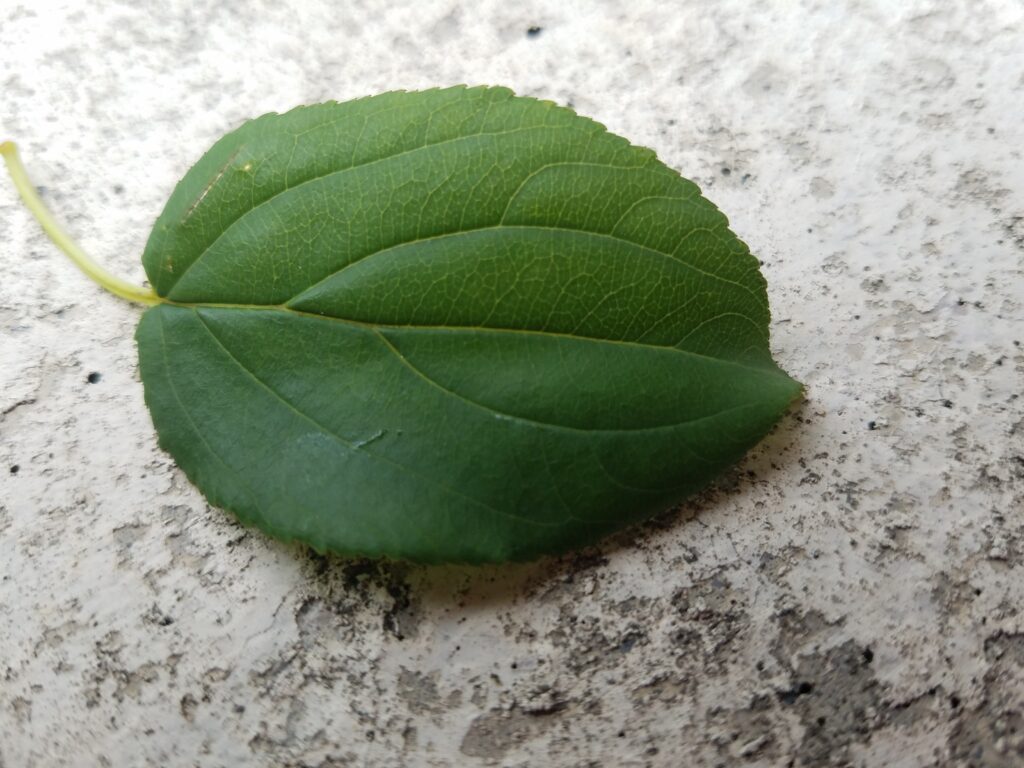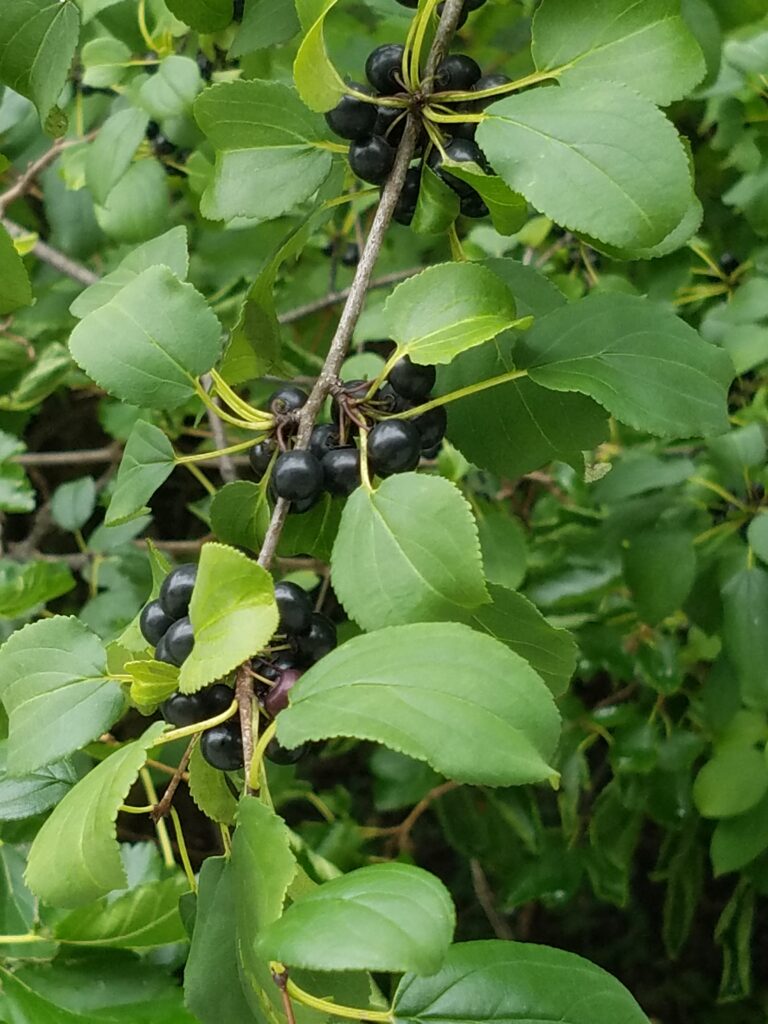Buckthorn Poisonous Invasive Plant
Common buckthorn, (Rhamnus cathartica) is a wild-growing deciduous shrub that produces small berries that resemble blueberries. Buckthorn berries are poisonous to both humans and animals, plus it’s an invasive plant. Buckthorn Poisonous Invasive Plant.
The plant is native to Europe and is sometimes called European Buckthorn, European Waythorn, and Hart’s Thorn. Whatever name you know the shrub by, make note not to forage for the berries.
Back to Poison Plants
Appearance

Buckthorn grows into a large shrub or small tree that can reach 20-feet tall when mature. The shrub will have a 3-5 foot spread with multiple branches and bark that easily flakes off. A nick in the flaky bark will reveal orange inner tissue.
The shrub develops small, oval leaves that are dull green with a lighter green underside, and the leaf edges are serrated. Each branch will have small thorns at the end and thorns may also be found at the junction of branches throughout the shrub.
Blooms appear in late spring at the same time the leaves are emerging. Flowers will have 4 petals that will be yellow or green in color. The blooms are fragrant but not much to look at.
Clusters of small green berries appear in the shrub after the flowers fade. As the berries ripen they turn from green to blue, then to purplish-black when fully ripe. Each small berry contains four seeds.
Wild Growing Locations
Common buckthorn is an understory plant and thrives along the edge of woods and waterways. It’s a hardy plant that develops into dense thickets and chokes out other native-growing plants.
The shrub is not picky about soil or light conditions and is able to grow almost anywhere. The long branches of the shrub and dense leaf covering that last well into fall produce so much shade that surrounding green plants quickly die from lack of sunlight.
Do Not Eat

Buckthorn berries look attractive on the shrub when they’re ripe but don’t eat them. In addition to being very low in nutrition and bitter, they also act as a strong laxative. The laxative impact is so strong that small birds and animals will die from the effect. Severe abdominal discomfort and dehydration will occur in humans if eaten.
Even the leaves of the shrub have a negative impact on the soil when they fall from the plant and decompose. The leaves are very high in nitrogen and provide a boost of energy for the shrub to develop more top growth. The increased nitrogen also promotes the fast growth of the hardier species of native weeds that survive around the shrub.
Uses
Under certain circumstances, the common buckthorn is useful. In barren areas where erosion control is needed this fast-growing shrub will provide a formidable windbreak and hold soil in place.
Buckthorn will survive in sandy, rocky, clay, or damp soil. It will also live in shady areas, in cold or hot climates. Salty sea air near the coastline or low oxygen levels on high mountains will not stop this invasive shrub from growing. As with any plant, the better the growing conditions the better it will grow, however, bad growing conditions will not stop this plant.
If you have a landscape area, like a rocky cliff or other steep terrain that needs erosion control, buckthorn may be helpful. The shrub does not attract bears, deer, or other wildlife, and in some situations that may be beneficial.
How To Get Rid Of Buckthorn
More people want to know how to get rid of the invasive shrub rather than how to grow it. Removal is time-consuming and must be done meticulously to prevent the shrub from re-growing.
Small samplings can be pulled out of the soil by the roots and disposed of. The older shrubs that produce berries will need to be removed from the soil, along with all roots, and burned. If the shrubs are not burned and berries are on the uprooted buckthorn, there’s a possibility that birds will come by grab one in their mouth and drop it nearby. Buckthorns are so hardy and adaptable that all it takes is one dropped berry to start a new thicket.
After removal and burning, revisit the area several times to check for newly sprouted seedlings. Since each berry contains four seeds and shrub roots run deep, there’s always a chance that a few seeds escaped the flames or a root got left in the ground. Either occurrence will be the start of a new buckthorn thicket.
If multiple seedlings sprout in an area that has been cleared, mowing the seedlings down is often an effective removal method. Several mowings over the course of a summer may be needed to completely eradicate a buckthorn thicket.
Large stumps can be killed with chemical treatments instead of remmvong them from t he ground. However, if chemicals are used they will remain in the soil and render the soil unfit for growing any vegetations for the following 3-5 years.
Notes Of Interest
* Buckthorn has relatively no pest problems and no predators. The shrub can grow and spread undisturbed by any type of animal due to its poisonous nature.
* A few bird species will eat the buckthorn berries during winter when no other food source is available. Each berry contains four seeds so the invasive shrub is soon re-seeded in various locations through bird droppings.
* Seeds can remain viable in the soil for up to five years.
Buckthorn is a problem
- Out-competes native plants for nutrients, light, and moisture
- Degrades wildlife habitat
- Threatens the future of forests, wetlands, prairies, and other natural habitats
- Contributes to erosion by shading out other plants that grow on the forest floor
- Serves as host to other pests, such as crown rust fungus and soybean aphid
- Forms an impenetrable layer of vegetation
- Lacks “natural controls” like insects or disease that would curb its growth
Buckthorn Poisonous Invasive Plant